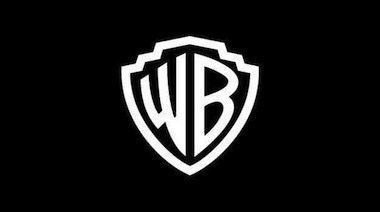| starsza | lista | nowsza |

Aktualności
24 paź 13
One of the Majors: Warner Bros at 90
This edition of the American Film Festival celebrates one of Hollywood's most famous studios, Warner Brothers, which celebrate its 90th anniversary this year. Although to its founders it probably looks very different to the way they envisaged it.
The Hollywood studio system no longer exists the way it did during the Golden Age of Tinseltown (a period that runs – roughly – from the 1930s to the 1960s). Multinational conglomerates now owns individual studios. That holds true of Warner Brothers. The familiar studio logo may appear before the title of each film, but beneath it reads 'a Time Warner Company' – an organisation that spans all manner of media, entertainment and consumer products. However, that doesn't negate the rich history the studio has enjoyed since it was first incorporated as Warner Brothers Pictures in 1923. Warner Brothers was created by three Polish brothers, Harry (Hirsch), Albert (Aaron) and Sam (Szmul) Warner (Wonkolser), who travelled to the US from what is now Osrołęka, at the end of the 19th century. They first lived in Canada, where a fourth sibling, Jack, was born. Although he was junior to his brothers, Jack would eventually become the studio's driving forcing, remaining in power for 45 years until the 1970s, making him the most enduring of the legendary Hollywood moguls. The brothers entered the film industry at the inception of narrative cinema, investing money in the presentation of Edwin S. Porter's 1903 productions The Great Train Robbery and The Life of an American Fireman. At the start of the First World War, with a chain of movie theatres under their ownership, they began to produce their own films. By the late 1920s, Warner Brothers was one of the eight majors. Within this was the Big Five – integrated conglomerates that controlled the means of production and exhibition. They were Warners, Loew's/MGM, Paramount, Fox and RKO. Universal and Columbia were significant in terms of production but never owned more than a few small cinema chains and United Artists – created by Charlie Chaplin, Mary Pickford, Douglas Fairbanks and D.W. Griffith – worked on a contract basis with the other majors. (Today, there are only five of those remaining whose operations are based in or around Hollywood: Warners, 20th Century Fox, Universal, Paramount and Columbia. The sixth major, which was completely independent in its early years, is Disney.) Of all the studios, Warner's rise is the strangest, due in the most part to the popularity of a very unlikely star – a dog. Where the North Begins (1923) was a box office smash and Rin Tin Tin became a household name. Jack Warner was so impressed he put him on a weekly contract of $1,000. Further success followed with the arrival of brilliant German émigré director Ernst Lubitsch and then the studio's first human star, stage actor John Barrymore, who appeared in Beau Brummell (1924). Warners' success lay in its daring to innovate in a market that was, for the most part, creatively conservative. However, such forward-thinking almost destroyed the studio. In 1925, Warners began to invest heavily into the development of synchronised sound. By 1927 they faced financial ruin, with the other studios hoping to pick up the pieces. Then the studio released The Jazz Singer (1927) and what others saw as a gimmick, Jack Warner – now head of the studio following his brother Sam's death – knew was a gold mine. He was right. The film and its sequel, The Singing Fool (1928) – also starring Al Jolson – not only put the studio back in the black, it made them as powerful as MGM, Paramount and Fox. The retrospective that plays across the whole of the festival offers an eclectic mix of old and new, but also a number of key films that highlight that element of innovation. The Jazz Singer is present, as is the Wizard of Oz (1939). Although Victor Fleming's film was not the first colour film in Hollywood, it was one of the first to employ the format inventively, moving between monochrome and technicolor worlds. (That said, it always seems odd that the world Dorothy is most desperate to return to, Kansas, appears in black and white, whilst the world she wants to escape, Oz, is in colour. Powell and Pressburger – and later Wim Wenders with Wings of Desire (1987) – reversed this idea with their sublime 1945 wartime romantic fantasy A Matter of Life and Death.) Singin' in the Rain (1952), with its knowing parody of the coming of sound in Hollywood, exuberant dance numbers – particularly an extended dream sequence featuring star Gene Kelly and Cyd Charisse – and brisk pacing challenged MGM's position as the studio that produced musicals. Now regarded as a classic, it is a opulent, wonderful experiment in narrative form. Warners' support for directors with vision has, over the years, resulted in daring releases and the cementing of fruitful – both artistic and economic – relationships. The Exorcist (1973), a film that has lost little of its power to disturb, was a risk for the studio, but one that paid off handsomely. Warners also nurtured a relationship with Clint Eastwood around this time. His production company, Malpaso, has remained a permanent fixture at the studio ever since and is represented here by the atypical The Bridges of Madison County (1995). An adaptation of a lachrymose novella, Eastwood's stately drama, featuring subtle and affecting performances by the director and Meryl Streep, is a moving account of unfulfilled lives and lost moments. Although the studio occasionally worked with Steven Spielberg on films such as The Color Purple (1985) and his most underrated work, an adaptation of J.G. Ballard's Empire of the Sun (1987), its most famous relationship with a director has been with Stanley Kubrick. For all the commercial fodder released over the years, the studio's support of this visionary filmmaker was their claim to artistic merit. Kubrick was given unprecedented control over his films (very much like Howard Hawks – classical Hollywood's most accomplished freelance filmmaker, whose 1959 classic Rio Bravo screens here), hence such singular works as 2001: A Space Odyssey (1968) and A Clockwork Orange (1971). Since Kubrick's death, Warners has yet to find another director who successfully balances a pure, uncompromising vision of the world with such strong audience demand to see whatever they have created. Two directors come close. David Fincher has worked occasionally with the studio and has produced a fascinating, if flawed, body of work. (2008's The Curious Case of Benjamin Button, showing here, is one of his more divisive films – a technically brilliant drama whose narrative longeurs will either entertain or exasperate.) Then there is Christopher Nolan. Arguably the studio's most successful director of the last decade, Inception (2010) reinforces his reputation as a formidable talent. Whether he has important things to say – to speak of the human condition as Kubrick once did – remains to be seen. But there is no doubt that Warner Brothers have struck gold once again.
|
Moje AFF
Strona archiwalna 4. edycji (2013 rok)
Przejdź do strony aktualnej edycji festiwalu:
www.americanfilmfestival.pl Nawigator
październik 2013


Szukaj
filmu / reżysera / koncertu:
|









